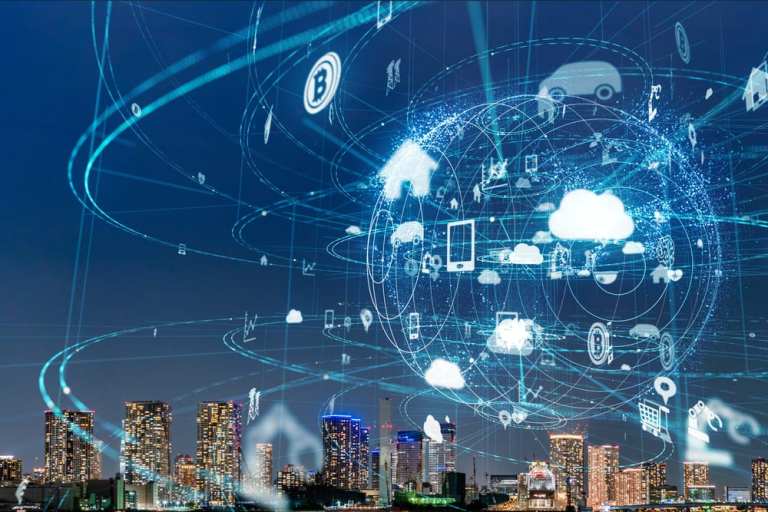The global pandemic stunted progress in many nascent companies and industries. Internet of Things (IoT) projects, for example, like the installation of a 5G mobile infrastructure that fully enables IoT functionality, might also have been deprioritized as world economies tanked.
Instead, there’s a rapidly growing perception that IoT connectedness at 5G speeds is exactly the kind of technology to help smart cities better manage things like pandemics, as well as all manner of logistical challenges that “smart” municipalities will need systems to manage.
Acknowledging that IoT developments took a back seat to the pandemic during the dramatic first half, PYMNTS’ May 2020 Intelligence of Things Tracker® states, “These short-term impacts are expected to be far outweighed by the value connected and autonomous technologies will bring to homes, workplaces and the public sphere in the post-COVID-19 era.”
“IoT technologies will be essential to facilitating remote work relationships, ensuring air quality and sanitation in buildings and transit systems and minimizing transmission risks in hospitals. One study projects that the IoT market will grow by a double-digit compound annual growth rate (CAGR) through 2021 to $243 billion, despite the pandemic-induced economic slowdown.”
Smarter Buildings for Smart Cities
IoT pilots and solutions continue to roll out despite worldwide disruptions. Healthcare is a major area of focus now as technologists direct their skills at COVID-19 and its aftereffects.
Advertisement: Scroll to Continue
“Analysts expect that the pandemic will ultimately spur growth in the use of IoT for medical care. Diagnostic sensors can minizine the need for direct contact between patients, nurses and doctors, and smart inventory management devices can keep track of which vital supplies may need to be restocked,” the May 2020 Intelligence of Things Tracker® states.
“One study forecasts that sales of IoT-enabled medical devices to United States hospitals will grow by nearly 20 percent through 2024, reaching $319.3 million. The rapid deployment of IoT technology is also reaching other industries, including manufacturing and transportation. Some solution providers have developed wearable positioning devices for office environments that alert workers when they cross the recommended six-foot distancing buffer, while other firms are using thermal cameras to monitor employees’ temperatures.”
With a directory of notable providers in the IoT space, the latest Intelligence of Things Tracker® also avers the importance of connected tech in making cities smart, building-by-building.
“The pandemic has highlighted one aspect of smart city technologies for many businesses and agencies: rethinking how connected building systems should be built going forward,” the Tracker states. “Buildings are complex systems, involving the circulation of air, water and electricity. Smart sensors can ensure these resources are delivered cleanly and efficiently. IoT-based technologies can employ remotely operated sensors that help buildings maintain satisfactory levels of air quality and sanitation, which are key considerations as offices and shops reopen.”
The Autonomous Metropolis
If anything, it appears that COVID-19 is firing the imaginations of IoT and 5G executives, as well as individuals who are starting to perceive possibilities for the new interconnectedness.
“We’re finding more requirements and requests for everything that has to do with health monitoring in buildings … and for the concept of resilient cities. Digitalization has become more front and center,” Michael Lotfy, senior vice president of smart building solutions for Switzerland-based global electrical technology corporation ABB, told PYMNTS.
While public health applications of the IoT are of intense interest now, the original vision of smart cities — of the autonomous metropolis — has lost none of its dazzle or utility.
“IoT systems can be embedded in public transit systems to efficiently manage capacity while avoiding overcrowding,” the Tracker states. “Smart power grids can monitor and repair themselves as well as manage transmission due to damage or surges in demand. Robust communication platforms can help firms and agencies collaborate remotely with more reliability and functionality …” than with legacy networks in wide use today.




